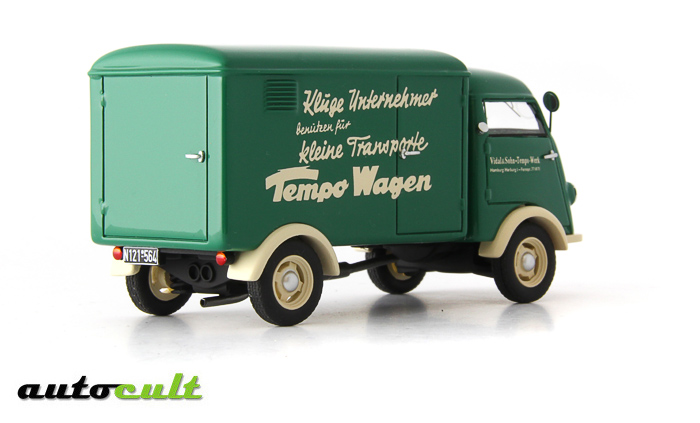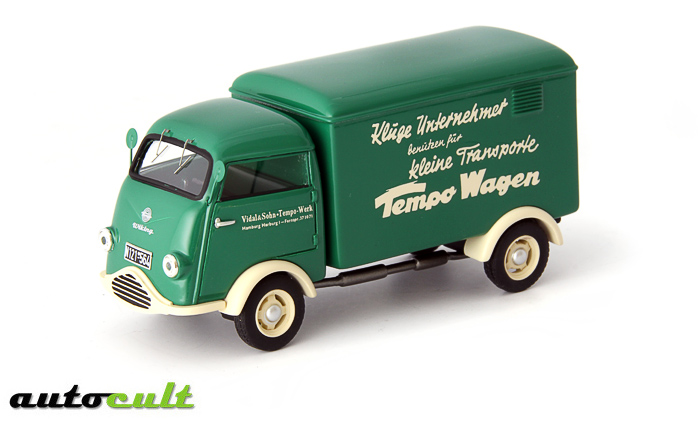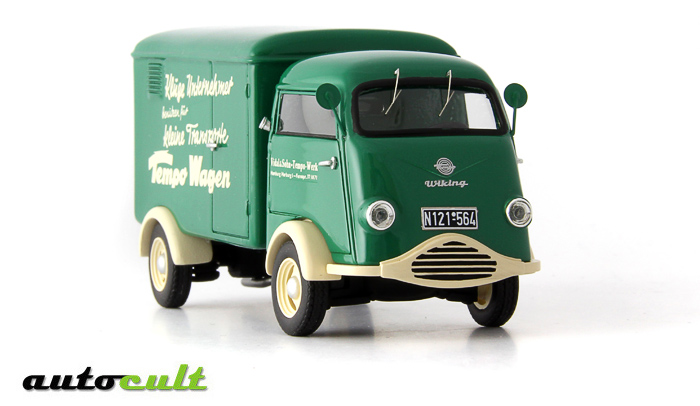|
Erfolgreich das vierte Rad hinzugefügt Das Dreirad des Herstellers Tempo Vidal + Sohn war in der kurzen Nachkriegszeit ein sehr beliebter Kleintransporter, doch 1952 ging die Nachfrage stark zurück. Als
Nachfolger präsentierte das Werk in Harburg-Bostelbek auf
der Internationalen Automobil-Ausstellung 1953 den vierrädrigen
Typ Wiking. Charakteristisch für diesen neuen Kleintransporter
waren die herausstehenden Radkästen und der an der Front
sehr tief angebrachte Kühllufteinlass. Die Front erinnert
viele an einen Haifisch und so wurde der Wiking im damaligen Sprachgebrauch
auch nur kurz als „Haifischmaul“ betitelt. Um
die Leistungsfähigkeit des Wiking zu unterstreichen, schickte
as Werk drei Serienmodelle auf eine Nonstop-Distanz über
10.000 Kilometer, die am 12. April 1954 gestartet wurde.
Successfully
Added the Fourth Wheel On
12th of April 1954 the plant was sending three series models on
a nonstop-distance of 10,000 kilometers to underline the performance
of Wiking. |
||
 |
||
|
Le Prestazioni Fanno la Differenza Il Marchio Automobilstico Britannico TVR, fondato nel 1947 divenne famoso specialmente per le sue vetture sportive. Una
delle vetture salienti della TVR fu la Tipo Tasmin, che fu ideata
durante la seconda parte degli anni 70: il nome Tasmin è
una parola Macedonia composta dall’Antroponomio Femminile
Tamsin e il nome dellla serie di gare che si svolgevano tra l’Australia
ed la Nuova Zelanda: la Tasman-Series; che fu proposta dal 1964
fino al 1975. Lanciata sul mercato a partire dal 1980, la nuova
vettura sportiva era dotata di un corpo vettura rivoluzionario:
se le forme arrotondate avevano caratterizzato le vetture della
casa di Blackpool, la Tasmin era fornita una carrozzeria spigolosa
realizzata in plastica; il responsabile di questo cambiamento
di design fu il Britannico Oliver Winterbottom, un designer che
aveva avuto precedentemente esperienze come designer alla Lotus;
a quel tempo era stato recentemente assunto alla TVR. Dal
1981 fino alla fine della produzione della Tasmin, nel 1984 furono
prodotte soltanto 16 Coupé e 45 Convertibli della versione
a Quattro clindri, mentre la Versione V6 raggiunse la cifra totale
di 980 esemplari (118 Coupé e 862 Convertibili). |
||



